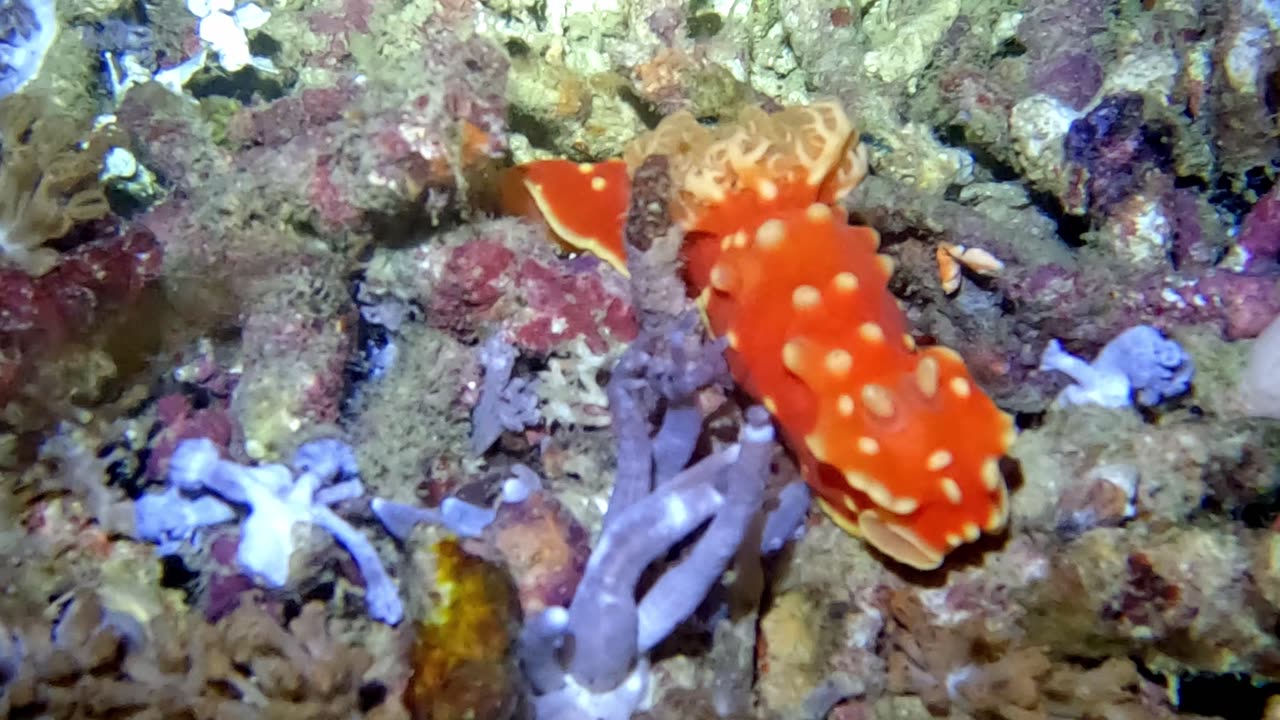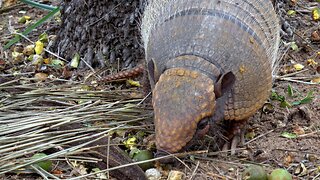Premium Only Content

The beautiful and fascinating strawberry nudibranch
Strawberry nudibranchs, are a species of marine gastropod mollusks. These captivating sea slugs are widely distributed throughout Indo-Pacific coral reefs, where they play a unique role in the marine ecosystem.
Characterized by their vibrant colors and intricate patterns, strawberry nudibranchs are relatively small, measuring around 1 to 2 centimeters in length. Their name is derived from their striking resemblance to strawberries, as their bodies feature shades of red, pink, and orange, often accompanied by white or yellow markings. This vivid coloration serves as a form of camouflage, helping them blend into their coral reef habitats.
The frilly, tassel-like structures on the back of the nudibranch are the gills. These external gills allow them to filter oxygen from the sea water. Nudibranchs are slow moving, can swim or be propelled along either by muscular contraction or by millions of tiny hairs on the bottom of a fleshy "foot". They have a voracious appetite and feed with a rasp like tongue.
Strawberry nudibranchs primarily feed on soft corals. Unlike some other nudibranch species that utilize stinging cells (nematocysts) from their prey for defense, strawberry nudibranchs are known to incorporate these nematocysts into their own tissues. This unique adaptation provides them with a level of protection against potential predators.
These sea slugs have a fascinating reproductive strategy. They are hermaphroditic, meaning each individual possesses both male and female reproductive organs. During mating, two nudibranchs exchange sperm with each other, and later, each one lays a ribbon-like egg mass on the coral substrate. The eggs develop into veliger larvae, eventually settling onto the coral reef and metamorphosing into the adult nudibranch form.
The presence of strawberry nudibranchs in coral reef ecosystems contributes to the overall biodiversity and ecological balance. They play a role in controlling soft coral populations, helping to maintain a healthy coral reef environment.
Scientists continue to study these captivating creatures to better understand their behavior, ecology, and the intricate relationships they have with their surroundings. As coral reefs face numerous threats, including climate change and habitat degradation, the study of species like the strawberry nudibranchs becomes crucial in the conservation efforts aimed at preserving these fragile marine ecosystems.
-
 1:23
1:23
WildCreatures
1 month ago $3.39 earnedThis mother armadillo eating her palm nuts is truly adorable
24.5K17 -
 19:05
19:05
Sponsored By Jesus Podcast
2 days agoI Lost the World But Gained My SOUL | Freedom in Christian Suffering
1.14K3 -
 14:47
14:47
Dr. Nick Zyrowski
15 days agoFasting Is THE Cure - NO FOOD FOR 3 DAYS Completely Heals You!
1.35K9 -
 LIVE
LIVE
ROSE UNPLUGGED
43 minutes agoClimate Fatigue: Is the Whole World Feeling It?
45 watching -
 2:01:24
2:01:24
The Charlie Kirk Show
2 hours agoBiblical Borders + The Illegal Superintendent + Shutdown Fever | Deace, Homan | 9.30.2025
148K39 -
 LIVE
LIVE
Badlands Media
10 hours agoGeopolitics with Ghost Ep. 42
1,125 watching -
 2:01:33
2:01:33
Right Side Broadcasting Network
3 hours agoLIVE REPLAY: President Trump Makes an Announcement - 9/30/25
86K27 -
 1:56:03
1:56:03
MattMorseTV
3 hours ago $8.19 earned🔴Trump's Oval Office DECLARATION.🔴
43.3K33 -
 DVR
DVR
Simply Bitcoin
2 hours ago $0.52 earnedIs $1.6B about to HIT Bitcoin TODAY?! (FTX SAGA ALMOST OVER!) | EP 1343
8.83K5 -
 LIVE
LIVE
SternAmerican
1 day agoPrecinct Strategy Briefing – Tuesday, September 30 at 1:00 PM EST - Steve Stern & Dan Schultz
77 watching